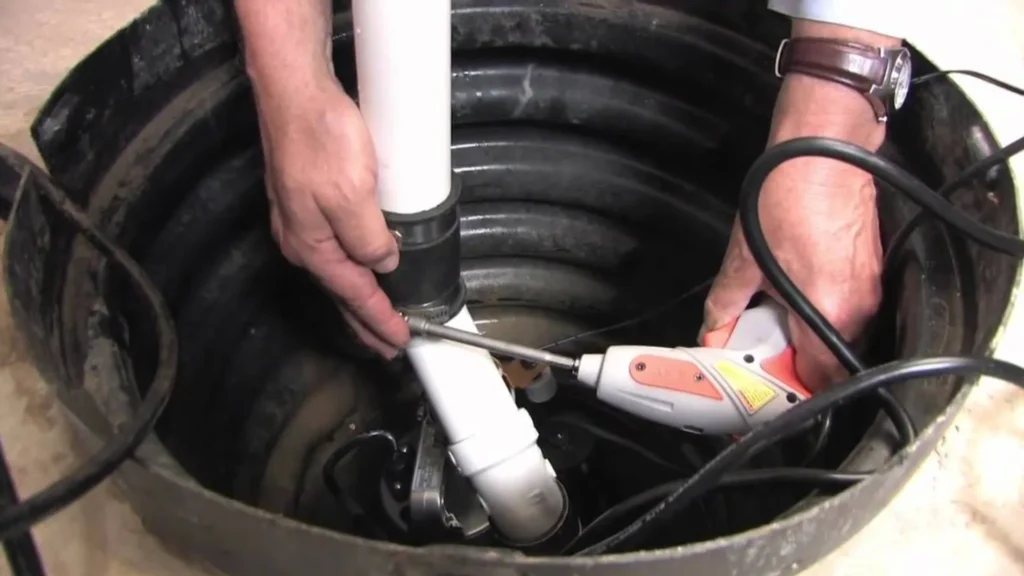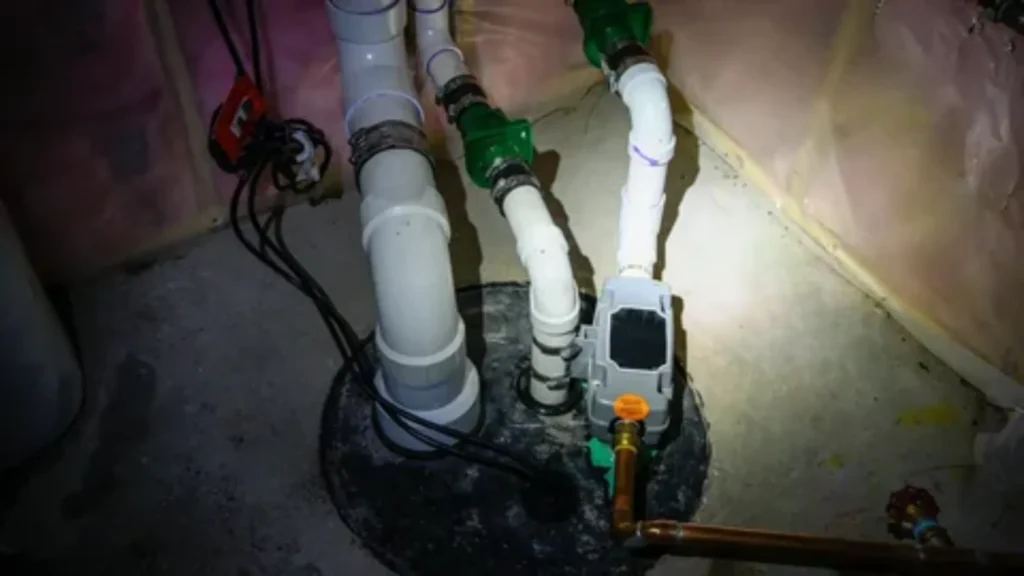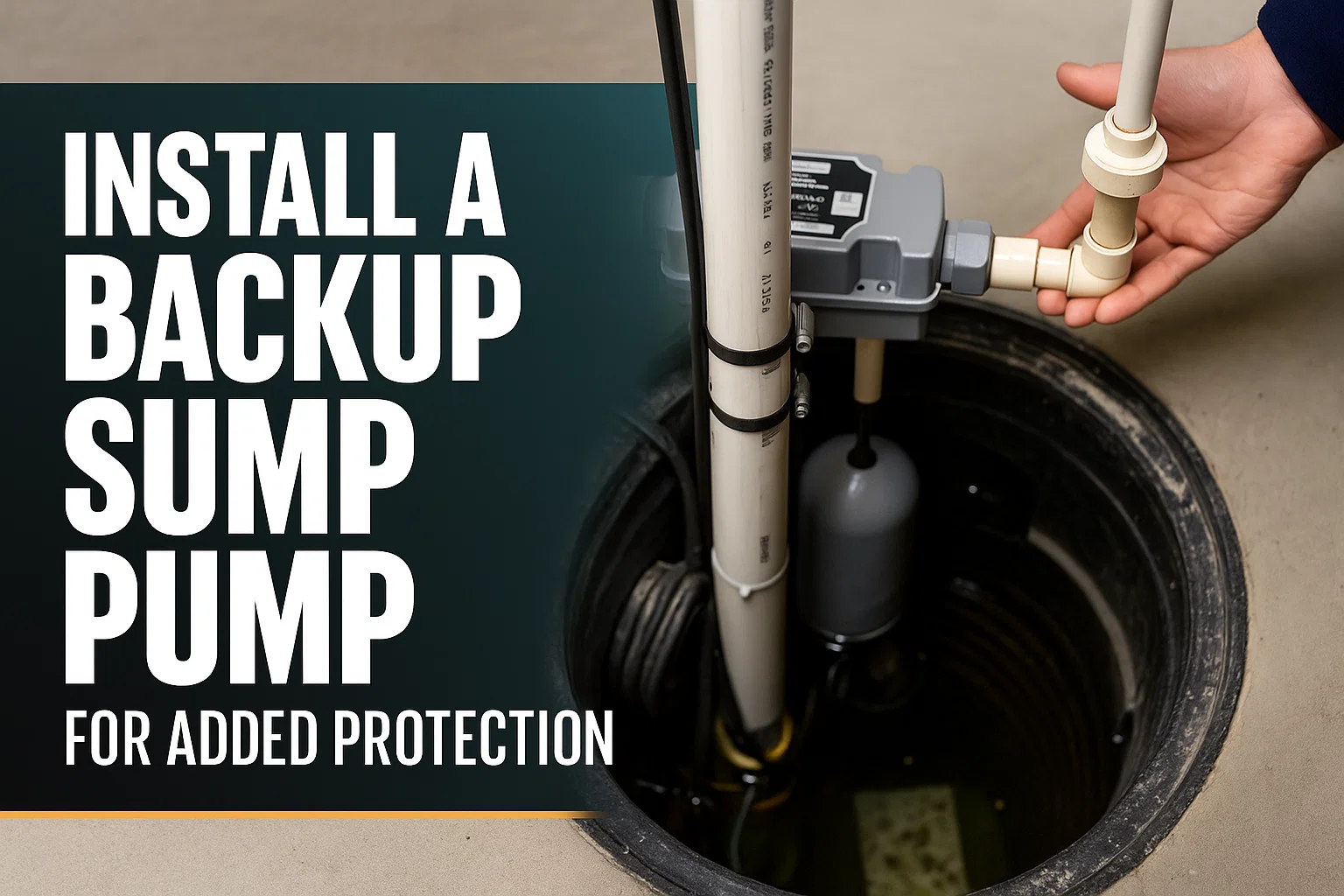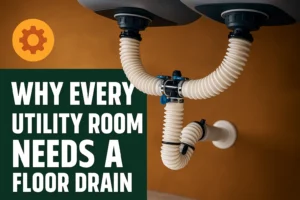A sump pump is a device that keeps your basement dry when the amount of water is high. Without the main sump pump or when there is no power, your basement is still at risk of flooding. In this case, it is sensible to install a backup sump pump. When the need arises, a backup sump pump works automatically in the event that the main pump cannot handle more water or if it loses power. This blog will guide you on how to install a backup sump pump for a well-protected, safe, and dry home.
Why Install a Backup Sump Pump?
Installing a backup pump is critical because primary sump pumps may fail due to loss of power, mechanical failure, or a high volume of water. A battery backup system operates in houses that lack water pressure backups, and it is the most common. The water-powered system uses municipal water pressure to function.
Pros:
- Provides overflow protection from pump failure or power loss
Prevents flooding of basement and water damage
Battery backups function without electricity
Water-powered backups operate for as long as possible. - Prolongs the life of the primary pump
Cons: - Complex installation, and it may require plumbing and electrical work
- Regular maintenance and replacement of batteries is required to ensure battery backup
- Backup systems add upfront cost and take up space.
- Poor installation or maintenance reduces effectiveness.
Step-by-Step Installation Guide
Considering the installation of a backup sump pump, it might be challenging, but the division of actions into steps makes the process more predictable. This step-by-step guide introduces the main steps required to set up a backup pump correctly to ensure a dry basement.
Turn Off Power and Remove Old Pump (if applicable):
Power should be turned off and any old backup pump should be taken out of the sump pit.
Clean the Sump Pit:
Clear dirt and debris to prepare for the new pump installation.

Install Check Valve:
Connect a check valve on the floe pump’s primary discharge line to stop the sump pump from forcing water back in the operation. Use Teflon tape threaded for a strong attachment.
Fit the float pump:
Intimately connect the backup pump to the check valve. Place the backup pump gently at the bottom of the sump pit.
Connect the discharge pipes:
Cut and cement PVC pipes to go with the backup pump. Link the pipes to the main pipe using rubber connectors and hose clamps to protect the waterproof seal.
Install the Float Switch:
Attach the switch to either the pump or discharge pipe at roughly 6 inches away from the sump pit waterline. Allow the switch enough space to work without being obstructive.
Set Up Battery and Control Unit (Battery Backup):
Place the battery on a bracket that is on a shelf next to the sump pit. Attach the low-voltage cords from the bracket to the pump based on the pump and test switch directions. Plug the battery charger into an electric supply port.
Test the Pump:
Fill the sump pit to activate the backup pump. Set the float switch to 6 inches from the top of the sump hole.
Secure All Connections:
Double-check all fittings, clamps, and seals for leaks. Tighten as necessary.
Professional vs. DIY Installation
You might get away with the cost savings by having some level of basic DIY abilities and a modest sump pump backup. However, for intricate systems, not putting yourself in danger and ensuring proper functionality, installing with experts is recommended. They ensure safety, legality, and your peace of mind that your home is well secured.
| Aspect | DIY Installation | Professional Installation |
| Cost | Saves money on labor costs | Higher cost due to skilled labor |
| Skill Level | Requires basic plumbing and electrical skills | No skills required from homeowner |
| Complexity | Best for simple battery backup pumps | Handles complex setups like water-powered or combo systems |
| Time | Can be slower depending on experience | Usually faster and more efficient |
| Safety | Risk of mistakes with wiring and plumbing | Ensures safe, code-compliant installation |
| Warranty | May void warranties if not installed by professionals | Maintains warranty compliance |
Common Challenges in Backup Sump Pump Installation
Installing a backup sump pump is vital, but it comes with challenges as well. To make sure your system is installed correctly and functions as required, you should consider the most common problems.
Power Issues and Battery Maintenance
A battery-powered backup pump can work fine only with reliable batteries and chargers; otherwise, it may never work when needed. Regularly examine and change the batteries as needed to depend on this pump.
Proper Placement and Space Constraints
A backup pump may not always fit in the same sump hole where the primary pump is placed due to space limitations. The backup pump should not block the insertion of the primary pump or its float switches from working correctly.

Correct discharge pipe setup
Backup pumps depend on functional discharge lines and check valves that prevent the water from returning. Fitting the pipe the wrong way or not using the check tubes causes the system to fail and flood.
Float switch problems
The term switch triggers the pump when the level of the water is too high. If not installed correctly rust adjusted to the pump, the motor will start permanently, which will lead to machines grinding or flooding.
Plumbing and electrical connections
To work, backup pumps must have safe and law-compliant plumbing and electrical work. If using extensible cords instead of wiring or fitting the pipes incorrectly, multiple dangers can occur and follow local regulations.
Clogged Sump Pit or Pump Intake
Debris in the sump pit and pump suction will stop the shovels from functioning. Make sure to keep this area clean and protected.
Skipping Professional Installation
You can try to do it by yourself, which is appealing to save some money but you can skip, miss some critical substances. To make sure you have the right size, fasten the connections, and are in good compliance with safety standards.
Conclusion
Installing a backup sump pump is a wise choice to protect your basement against flooding and water damage. Following the right path and ensuring correct installation will keep the water away from your home when your primary pump malfunctions. For professional waterproofing solutions and effective basement protection, trust Lapans Basements Waterproofing. Reach out to us right away for more information and receive a free expert consultation to protect your home with high-quality products and services of Lapans Basements Waterproofing.
FAQs
A backup sump pump is a secondary pump that works in case the main pump fails or during power outages.
The backup pump prevents your basement from flooding and stops water damage in the event that the primary pump stops working.
The most common ones are battery-powered and water-powered backup sump pumps.
It is advisable to test your backup pump every other month or so to ensure it works smoothly.
If you are familiar with how plumbing and electrical work, you can do it. However, multi-pump configurations are preferably installed by professionals.
Around 3-5 years, depending on the quality and the type of maintenance performed.







